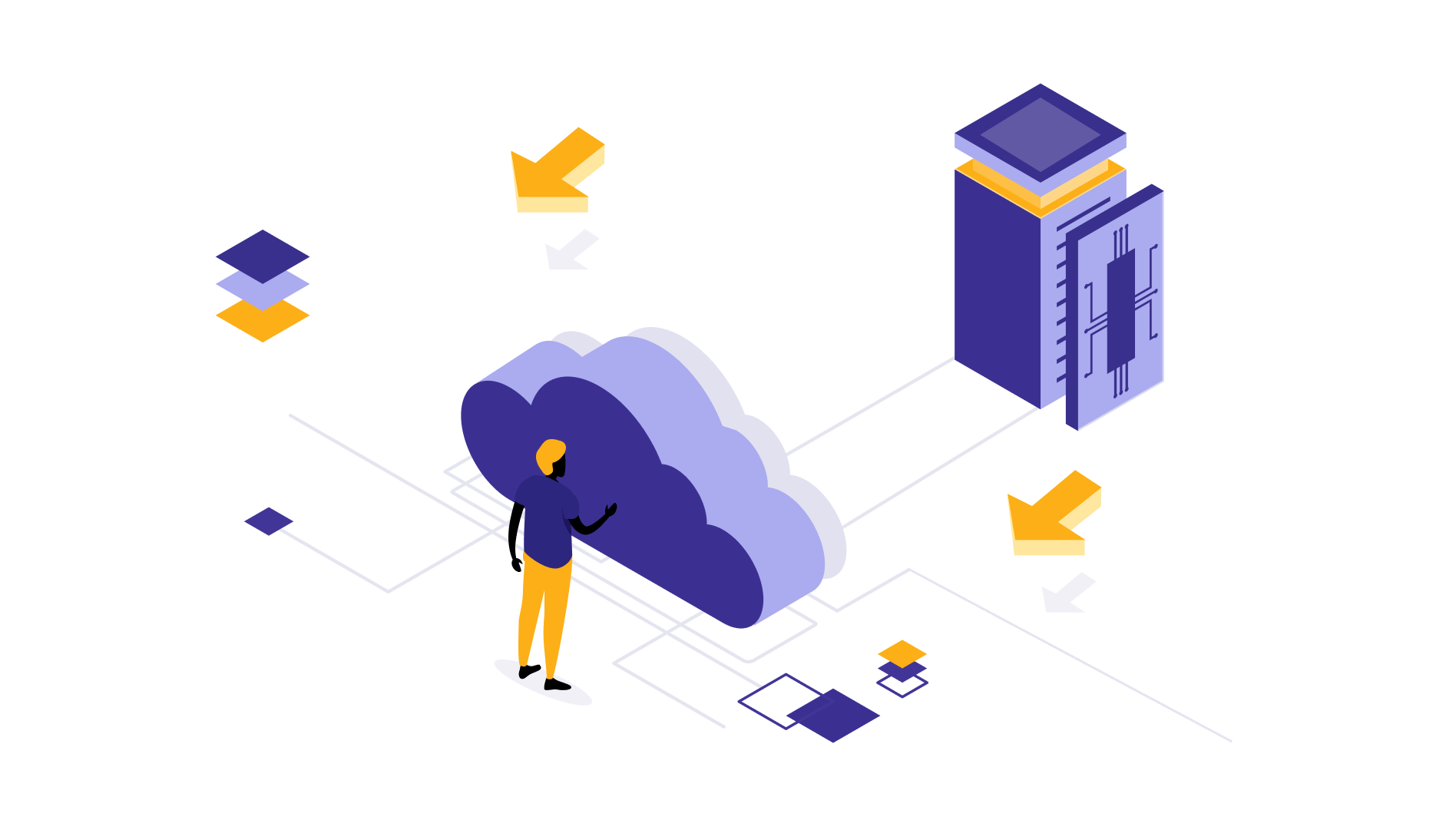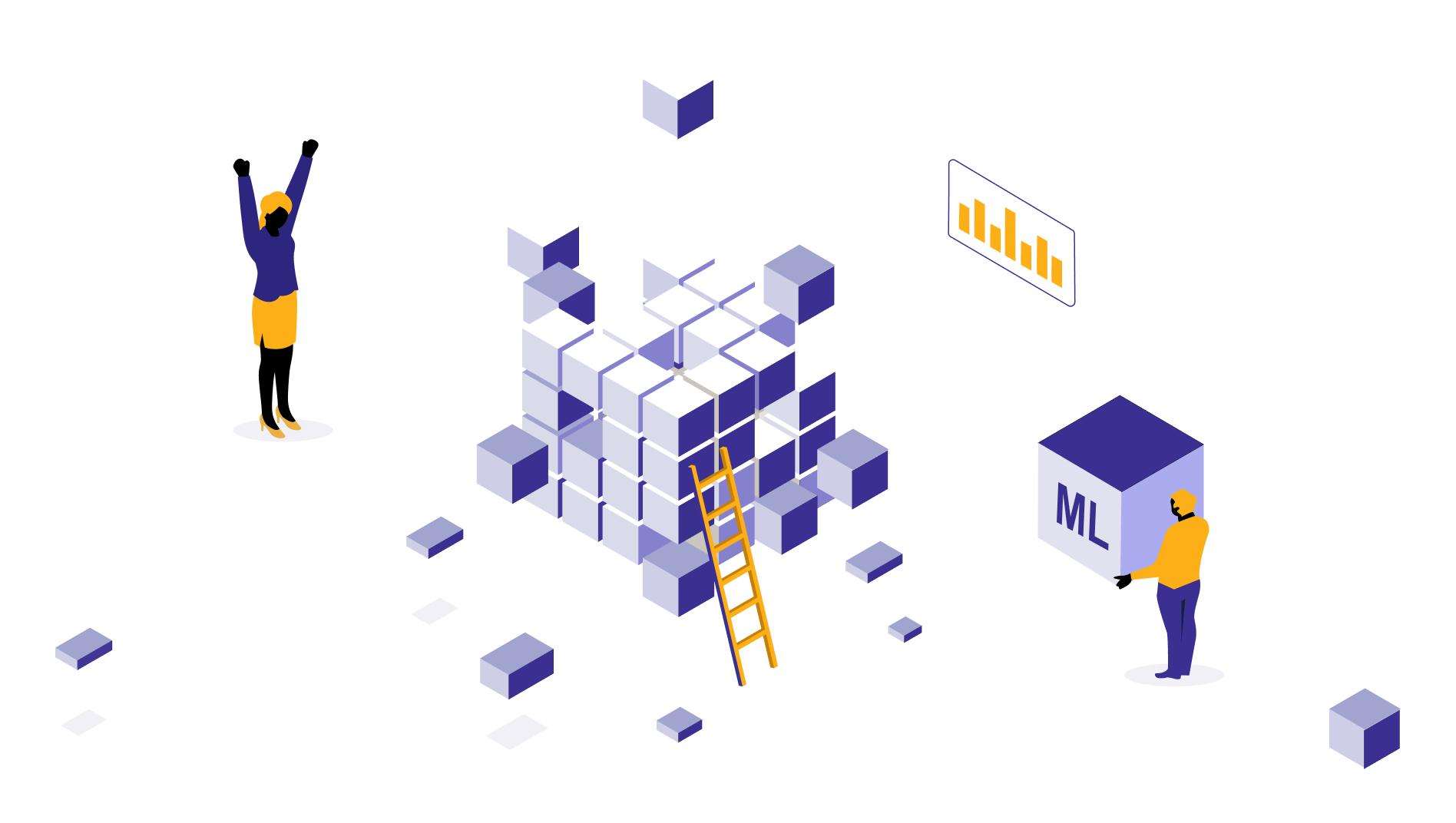On-prem to cloud migration: All you need to know
Organizations are moving their data to the cloud for scalability, speed, maintenance, and performance. This article is all about how this migration process happens. What challenges do they face when they migrate from on-prem to cloud? And how can you overcome them? and utilize the benefits of cloud migration.

Suresh
Mar 14, 2024 |
7 mins

On-premise vs cloud
On-premises denote hosting, storing, and managing your organizational data and applications physically on your company-owned infrastructure. The latter stands for using a third-party cloud provider’s servers and infrastructure which you access.
Maintaining on-premise infrastructure can be expensive. But it’s beneficial for companies who want full control over their data, enjoy unbeatable data security, and have their own support team operating 24/7.
With the cloud, service providers bear setup and maintenance costs. So, you spend less on IT infrastructure while flexibly accessing applications.
So, on-premises or cloud? On-premises is ideal for large enterprises, governmental organizations, and companies with stringent data security liabilities.
Cloud is the apt option for growing organizations that want scalable storage solutions, higher accessibility, and speedy performance at moderate IT costs.
Also, with the right cloud partner, data security will not be a concern.
Types of cloud computing
Following are the commonly followed cloud migration strategies, called the 4Rs of migration.
Rehost
Also known as lift-and-shift or forklift migration, this works just as these names sound—entirely lifting your data and architecture from on-premise and moving it to the cloud environment—as it is without changes.
Since no code changes happen here, it’s simple, cheap, and fast and requires minimal planning. However, the approach may not be suitable for many enterprises due to the following reasons.
The legacy applications will work the same way in the cloud environmen once migrated, leaving you with no options to scale or leverage other cloud benefits. Certain applications may not adapt to the cloud environment causing performance issues as well.
So, the rehost approach is better suited for companies who want a better data center than their local storage at simpler costs.
Refactor
This is the exact opposite of the rehost strategy. Here, major code and architectural changes are made so your applications suit the cloud environment. Thus, you can enjoy every benefit the cloud has to offer–scalability, flexibility, and better functionality.
All these code, data, and schema changes have to be done and tested carefully to avoid regression issues later. Since you are entirely modifying your current infrastructure from the ground up, it can take time to implement this approach.
Companies that expect long-term growth and ROI from cloud investments should go for this.
Replatform
Replatform is somewhere in between both the above strategies. Here you are not entirely changing the applications’ architecture while migrating to the cloud. Rather, you optimize them and make smaller modifications without disturbing the core features of the application.
This type of strategy is suitable for companies that are not fully ready yet for cloud migration. Instead, they want to test the waters and enjoy a few cloud benefits before making the on-prem to cloud migration decision.
Replace
Replace or repurchase, as the name suggests, is leaving behind legacy applications and replacing them with cloud-based SaaS applications. For example, a company is using an on-premise HRMS application. It’s replaced with a SaaS HRMS platform that offers similar features and functionalities with the added advantage of scalability.
This is better for companies that want to avoid development costs and don’t want to take architecture modification risks.
Challenges of on-prem to cloud migration
Moving from on-premise is a major decision. It comes with a few challenges as well. Some well-known, addressable challenges which you can expect while performing and after on-prem to cloud migration.
Data security and compliance risks
Cloud migration involves moving around huge volumes of sensitive data from a location that only belonged to your organization to a shared cloud infrastructure. Cloud platforms ensure the entire safety and security of your data, you must take certain measures to protect your data, applications, and workflows. This makes setting appropriate controls necessary right from the start and adhering to the best practices while importing, accessing, or modifying them.
Complexity
If your organization’s current architecture is complex with multiple systems, applications, and data, cloud migration can be complex to begin with.
This is because it takes time to map out entire resources, plan the best possible migration solution for each, execute it without flaws, and make it work the same way post-migration.
A clearly defined cloud strategy and phase-to-phase implementation are required to address complex architecture successfully.
Cost management
While on-prem costs are more of a hefty one-time expense, cloud costs are short recurring expenses or what they might look like. Without proper cloud cost management strategies, your bills might snowball and peak your IT expenses.
On-prem to cloud migration costs can be expensive too and difficult to understand, given its complex breakdown. Knowing your short-term and long-term requirements is necessary before you get your feet wet.
Recommended read: Cloud computing in retail
Cloud migration strategy
Even with an in-house IT team, many organizations struggle without a proper migration strategy. A proper implementation requires a clear understanding of requirements, challenges, and checkpoints you might encounter—and making sure your roadmap addresses each of them. Without this, your on-prem to cloud migration will be only an expensive experiment.
Having a trusted third-party cloud migration service provider can help you here, finding what you need and prevent expensive mistakes.
Vendor lock-in
Vendor lock-in is a tricky situation when a business can’t switch from one vendor to another despite facing issues with performance, cost structure, support, etc. This can be a pressing issue after cloud migration, especially after spending months modifying data and architecture. To avoid this situation, possible scenarios must be discussed before migration and vendors should be carefully chosen.
The migration process from on-premise to cloud
Moving from on-premise to cloud may take from weeks to months. Strategizing it and following a step-by-step procedure helps you avoid potential pitfalls along the path.
Our basic five step on-premise to cloud migration process happens the following way.
Cloud migration planning
Planning involves asking a few right questions to determine your cloud goals, metrics, and requirements. It also involves getting every stakeholder involved and aligned with these goals. Find answers to why you want to move to the cloud IaaS from on premise. Is it for improved accessibility and elasticity? Do you need a data backup in case of natural disasters? Or you want to cut down the IT maintenance expenses?
Finding answers to these questions will let you know what you have to migrate and how—whether you are starting small with a lift and shift strategy, or performing an entire cloud migration or you only need a PaaS solution.
Document your goals formally along with KPIs to measure, budget breakdown, and a clear roadmap to follow.
Select the cloud provider
There are many cloud providers around—Google Cloud, Amazon web services, Microsoft Azure, and many other small players. There are also unified data platforms like Snowflake, Databricks, Microsoft Fabric, etc. You need to consider a few factors before choosing the right cloud provider for your business. What will be the cost of ownership, how secure and reliable are they, tools and features they offer, migration support, etc.
Other points to consider include what kind of backup facilities they have, how they set up access controls, speed and performance, on-time technical assistance, and many.
You can consult with a third party cloud evaluation partner and conduct an assessment on all the above factors too.
Every cloud provider has a cost and budget calculator available on their website too, like this AWS pricing calculator. Use these tools to determine your estimated spending.
Alternatively, if you partner with a cloud migration company, they will match the right provider that ticks your needs.
Prepare for the migration
Once you decide the perfect cloud switch that’s economically viable for you and fits your requirements, you need to plan how you are approaching migration of your digital assets. This is the stage where you decide which assets are getting moved to the cloud and how.
Business continuity and production turn-off time are crucial factors to be discussed ahead with all functional areas. Make sure that your teams are well aware of the switch and downtime and have their workloads and data saved well before.
There might be few critical aspects of your business that cannot be cut-off, like customer support or inbound sales. Plan your backup process accordingly before initiating the switch.
The best option is to start small, that is migrating a small portion of your on-premise infrastructure to cloud, test, and repeat it for others.
Data migration
This is the stage when your data, workload, and other architecture is moved from the on-premise set up to the cloud environment.
This migration can happen in batches, or in full-load depending on your business continuity, architecture complexity, and more factors like this.
Each cloud provider has a multitude of tools to support your data migration process. For example, AWS has a data migration services (DMS) tool to facilitate progress tracking, data and schema transformation, incremental data syncing, etc.
Typically, data engineers make sure that the migration happens without interrupting your critical work and projects so major data and applications are still accessible to users and customers.
It’s also important to ensure that every application and workload functions properly after migration which is why batch-migration is recommended.
Testing and optimization
Migration process doesn't end with moving to the cloud from on premise. Your old legacy systems must have been discontinued and decommissioned and new IaaS based applications would have been set up. It must be tested by end users to identify accessibility or other issues with the functionality.
Remember setting KPIs and metrics to measure the success of your cloud migration? It’s time to dust it off, bring it back to life, and measure to see how a cloud environment is effective for your short and long-term success. These KPIs can be related to latency issues and performance-related incidents, monthly IT expenses and cost overruns, customer satisfaction, internal feedback, etc.
Benefits of migrating from on premises to cloud
Cloud infrastructure is beneficial for growing enterprises in many ways.
Cost-effective
Cloud and SaaS costs can be expensive due to their billing nature. But it is much more efficient if you plan your requirements, find the right vendors, choose the most appropriate plans, and discard unused licenses and resources. Cost-wise, this is much better for growing companies than buying expensive proprietary licenses for on-premise setups.
Besides, cloud infrastructure doesn't have setup and maintenance costs of hardware devices since the provider takes care of it.
Accessibility
Unlike on-premise applications that require your computer to be connected to the office network, cloud systems can be accessed from anywhere. It only requires proper internet connection. You can access the system through web portal, mobile applications, and tablets with an username and password.
This allows you to grow and expand your business without physically limiting your employee base in one location.
Scalability
When you consider scaling your business, on-premise infrastructure might be more expensive than cloud solutions. You might have to invest in more hardware, data centers, and physical servers and increase computational capabilities. All of this requires proper planning, maintenance, and increased spending. This problem is not there with cloud solutions. You can scale with ease and expand your data limits without security and compliance or latency issues.
Performance
Cloud platforms have an added advantage - elasticity. This means that it can adapt easily to changing demands and workloads while maintaining optimal performance levels. This means your employees and customers will be able to access resources at the best speed without latencies or break, particularly beneficial when your customer/client platform is integrated with payment platforms to accept payments, example: eCommerce platforms.
Reliability and support
Natural calamities, disasters, and physical attacks are a huge threat to on-premise infrastructure. Your business cannot continue running in such cases if it doesn’t have a backup data center to support. This is not a problem in case of the IaaS cloud services. With multi-cloud systems and servers located in various locations, you can continue accessing your documents, data, and applications without constraints.
With cloud providers running support teams 24/7, any issues you face can quickly be fixed, getting you back on track.
Final thoughts
Cloud market is continuously expanding, predicted to reach USD 1.44trillion by 2029. Even large enterprises and institutions are taking advantage of the cloud, moving to a hybrid cloud technology for improved accessibility. Though on-premise has its range of benefits, cloud technologies surely have advantages that modern businesses require to thrive.
Additionally, they also support data initiatives like data analytics, AI, and data science to grow further and fix bottlenecks in your processes.
Looking for a reliable cloud migration vendor? Send your requirements to us below, briefing your concerns. As a part of implementing data-driven growth, we have implemented successful on-prem to cloud migration for customers from different industries. Together, we will explore best possible solutions for your business, keeping your short and long-term business objectives in mind.
Migrate smarter, not just faster. Build your cloud analytics foundation with expert data analytics engineering services.

by Suresh
Suresh, the data architect at datakulture, is our senior solution architect and data engineering lead, who brings over 9 years of deep expertise in designing and delivering data warehouse and engineering solutions. He is also a Certified Fabric Analytics Engineer Associate, who plays a major role in making us one of the early adopters of Fabric. He writes in words whatever he delivers with precision to his clients, consistently voicing out trends and recent happenings in the data engineering sector.



